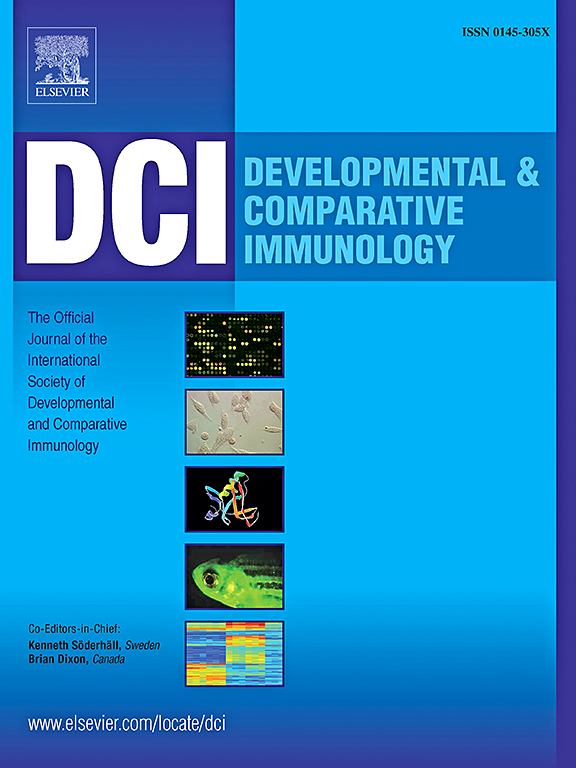Development of antigen-capture enzyme-linked immunoassay for Chicken Interleukin-34
IF 2.7
3区 农林科学
Q1 FISHERIES
引用次数: 0
Abstract
Interleukin-34 (IL-34), a recently identified cytokine, is known to share similar functions with macrophage colony-stimulating factor 1 (CSF-1). However, its function and active regions in avian species have not yet been fully understood. In this study, we report the functional characterization and immunomodulatory properties of chicken IL-34 (chIL-34) using a panel of newly developed anti-chIL-34 mouse monoclonal antibodies (mAbs). Five mAbs (3G11, 10A3, 11A7, 12A8, and 13C2) that specifically recognized recombinant chIL-34 protein were selected and characterized based on their binding activity toward recombinant chIL-34 protein via indirect ELISA and western blotting. A new chIL-34-specific antigen-capture sandwich ELISAs was developed using compatible mAb pairs (3G11 as the capture antibody and biotinylated-12A8 as the detection antibody) which have been identified through pairing assays. To validate the antigen-capture assay, we stimulated native chIL-34 production in the chicken HD11 macrophage cell line using three agonists, Lipopolysaccharides (LPS), polyinosinic:polycytidylic acid (poly I:C), and Resquimod-848 (R-848) at varying concentrations (0.5, 1.0, and 2.0 μg/mL). The qRT-PCR confirmed that the significant expression of chIL-34 was induced by 2.0 μg/mL of LPS, which we selected as an agonist for further chIL-34 production in HD11 cell line. We further stimulated the HD11 cell line with 2.0 μg/mL LPS and monitored the resulting changes in chIL-34 production over time using a mAbs combination (12A8 and biotinylated-3G11). The IL-34 production peaked at 24 h (h) post stimulation, followed by a decrease at 48 h. This pattern paralleled the expression of chIL-34 mRNA as detected by qRT-PCR. The changes in IL-34 levels in the serum of chickens infected with Eimeria maxima (E. maxima) and Eimeria tenella (E. tenella), measured using a combination of 12A8 and biotinylated-3G11, showed different patterns. Compared to uninfected chickens, IL-34 levels in E. maxima-infected chickens increased starting from 1-day post-infection (dpi), peaked between 3 and 5 dpi, and then rapidly decreased by 7 dpi, falling below the levels observed at 1 dpi. In contrast, IL-34 levels in E. tenella-infected chickens increased from 3 dpi and steadily rose at 5 and 7 dpi. All newly produced mAbs (3G11, 10A3, 11A7, 12A8, and 13C2) specific for chIL-34 effectively neutralized the function of IL-34, as measured by cell proliferation assays and IL-10 expression using qRT-PCR analysis. These new anti-chIL-34 mAbs and the antigen-capture ELISA will be valuable tools for both fundamental and applied research in avian immunology.
求助全文
约1分钟内获得全文
求助全文
来源期刊
CiteScore
6.20
自引率
6.90%
发文量
206
审稿时长
49 days
期刊介绍:
Developmental and Comparative Immunology (DCI) is an international journal that publishes articles describing original research in all areas of immunology, including comparative aspects of immunity and the evolution and development of the immune system. Manuscripts describing studies of immune systems in both vertebrates and invertebrates are welcome. All levels of immunological investigations are appropriate: organismal, cellular, biochemical and molecular genetics, extending to such fields as aging of the immune system, interaction between the immune and neuroendocrine system and intestinal immunity.

 求助内容:
求助内容: 应助结果提醒方式:
应助结果提醒方式:


